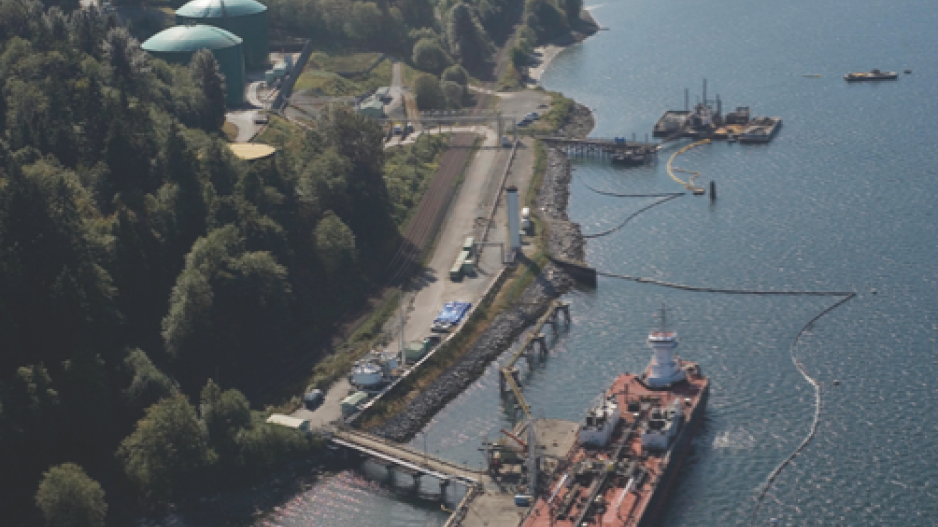One of the 157 conditions set by the National Energy Board (NEB) for the expansion of the Trans Mountain pipeline is the adoption of a greenhouse gas offset program.
And one of the five conditions set by the B.C. government is that British Columbia get more financial benefits from the project.
Those two conditions could very well dovetail if Kinder Morgan Inc. (NYSE:KMI) adopted a B.C.-based offset program that funded greenhouse gas (GHG) reductions in the public sector, according to Hadi Dowlatabadi, a professor at the University of British Columbia’s Institute for Resources, Environment and Sustainability and Canada Research Chair in applied mathematics and integrated assessment of climate change.
Presuming that the program used B.C.’s own carbon prices, not only would the province benefit from about $25 million worth of investments, but also the school districts, hospitals and municipalities receiving funding for low-energy conversion and retrofitting projects would dramatically reduce their energy bills.
“There are plenty of projects in the public sector – schools, hospitals, recreation centres – which could become significantly less polluting and cheaper to run,” Dowlatabadi said.
The NEB estimates that the twinning project would generate roughly one million tonnes of GHGs during construction and about 400,000 tonnes in annual operating emissions.
That is nine to 10 times lower than a comparable pipeline project in the U.S., Dowlatabadi said. He thinks the estimate should be more in the 10-million-tonne range.
“The estimates for Canada and the U.S. are different by a factor of 10,” Dowlatabadi said. “I can’t explain why. I would like to see how the hell they came up with that number.”
But even at one million tonnes, if the pipeline’s offset program used the price B.C. charges the public sector under its own carbon-neutral government program – $25 per tonne – the investments could be significant.
“If it is done well, it can generate huge benefits,” Dowlatabadi said.
But there are other ways Kinder Morgan could implement a carbon offset program that wouldn’t benefit B.C. at all.
It could, for example, adopt a “white certificate” approach, in which companies pay their customers to reduce their own energy consumption.
For example, 13 oil companies and shippers have off-take agreements for the new expanded capacity.
There are plenty of opportunities to invest in lowering GHGs in Alberta’s oilsands. Kinder Morgan could use white certificates to help some of its customers invest in projects like renewable energy in Alberta, for example.
Or the company could simply buy credits anywhere in the world through any number of carbon traders. Those investments can be dubious, however.
Investing in tree planting in Brazil, for example, might be a cheaper way to go, but the actual value of carbon sinks in terms of lower GHGs is notoriously hard to verify.
“You can buy really, really difficult-to-verify distant investments, or you can invest in B.C.,” Dowlatabadi said.
There is a potentially big market in B.C. in the public sector, which has been stuck on the horns of a climate change dilemma.
On one hand, the B.C. government’s carbon-neutral policy requires public institutions to pay fines in the form of carbon offsets for not meeting carbon-neutrality objectives. Some school districts pay hundreds of thousands each year in penalties.
But because the government does not provide the necessary capital funding, and because public bodies are not allowed to go into debt, many of these institutions are unable to come up with the capital they need to invest in the energy efficiency projects that would allow them to meet their government-mandated objectives.
Recreation centres, for example, could use energy conversion technology to use the waste heat from the cooling of ice rinks to heat their swimming pools.
School districts could replace old heating systems with ground-source heat pumps and newer natural gas energy systems – as the Delta School District has done in partnership with FortisBC – to not only shrink their carbon footprint, but also reduce their energy bills.
“There are a whole bunch of offsets available in our province, in particular in the public sector, where the economic motivations for the savings exist, but accounting constraints don’t allow them to occur,” Dowlatabadi said.
One thing Dowlatabadi doesn’t want to see is any offset program that plows money into forestry conservation projects like the Great Bear Rainforest. He thinks carbon sinks are dubious investments in terms of climate change mitigation.
“I don’t endorse forestry at all,” Dowlatabadi said. “It’s not easily monitorable, and the second [problem] is that many of the forestry contracts were signed at a time when there was low demand for wood products. And as the price for wood rises, there is overwhelming interest to renege on the contract.”
Kinder Morgan did not respond to a request for an interview to explain what type of offset program it might be considering. •




